|
80x5 -
240x3 -
240x4 -
320x1 -
320x2 -
320x3 -
640x1 -
640x2
Set display option above.
Click on
images to enlarge. |
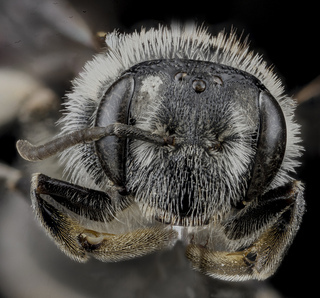
© Copyright source/photographer
· 9
Andrena miranda, female, face |
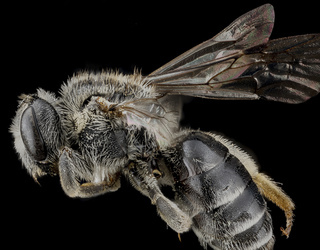
© Copyright source/photographer
· 9
Andrena miranda, female, side |
|
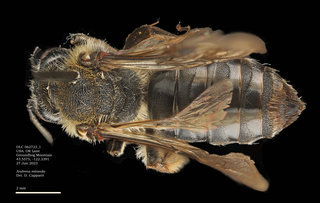
© Copyright source/photographer
· 9
Andrena miranda, female, dorsal, groundhog, DLC |
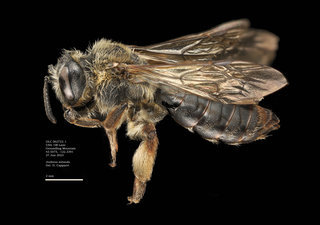
© Copyright source/photographer
· 9
Andrena miranda, female, lateral, groundhog, DLC |
|
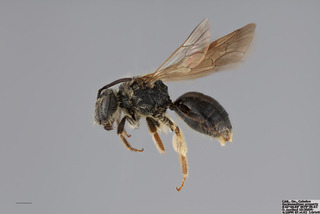
© Copyright Laurence Packer 2014
· 7
Andrena miranda FEM mm x f |
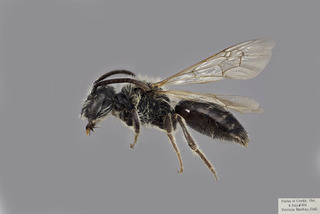
© Copyright Laurence Packer 2014
· 7
Andrena miranda MALE CFP comp |
|
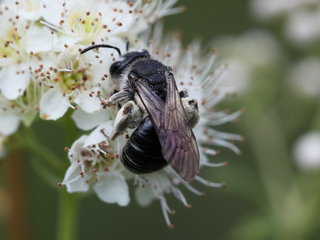
Michael Veit · 6
Andrena miranda, f on Spiraea -- |
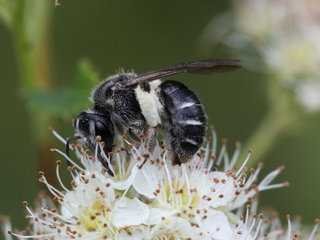
Michael Veit · 6
Andrena miranda, f on Spiraea -- |
|

Mitchell, Bees of the Eastern United States, Vol. I, 1960 · 1
Andrena miranda, figure38 |
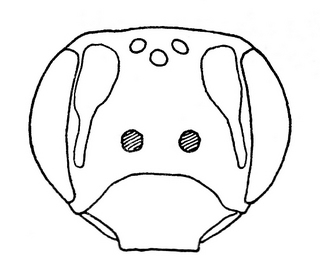
© Rebekah Andrus Nelson
· 1
Andrena miranda, female, face |
|
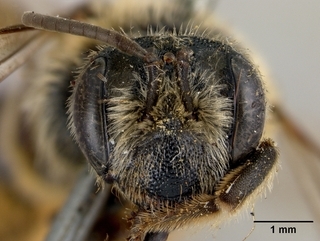
Smithsonian Institution, Entomology Department · 1
Andrena miranda, face |
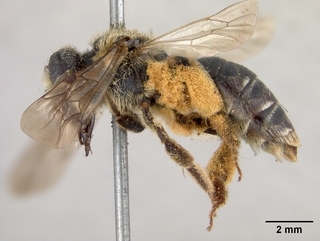
Smithsonian Institution, Entomology Department · 1
Andrena miranda, side |
|
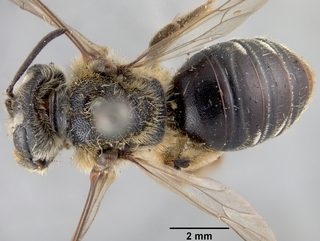
Smithsonian Institution, Entomology Department · 1
Andrena miranda, top |
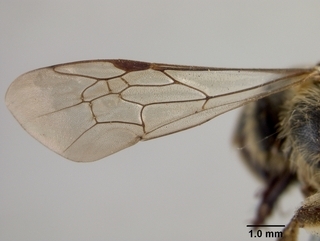
Smithsonian Institution, Entomology Department · 1
Andrena miranda, wing |
|
Overview |
Reprinted with permission of the American Entomological Society from:
LaBerge, W. E. 1973. A revision of the bees of the genus Andrena of the Western Hemisphere. Part VI. Subgenus Trachandrena. Transactions of the American Entomological Society 99: 235-371.
Please report text errors to: leah at discoverlife dot org.
This is a common northern species related to the mariae-group of species. A. miranda can be separated from the sigmundi and forbesii groups of species by the very coarsely rugose propodeum outside of the dorsal enclosure. It is similar to mariae in the relatively long apical area of the metasomal terga. The vertex, however, is long in both sexes and the facial fovea of the female is narrow. The males have the sixth sternum emarginate apically and a long first flagellar segment as in mariae but are more densely and coarsely punctate on the face, thoracic dorsum and terga and are shinier.
Considerable confusion has arisen between this and other species of Trachandrena. Much of this is due to intrapopulational variation which occurs in all species but some of the confusion arises because of modified morphological characters possessed by parasitized individuals (by Stylops sp.). For instance, stylopized females of miranda usually have the base of tergum 2 longer in relation to the apical area making these females appear like sigmundi females. Also, such females may be less distinctly punctate, have shorter vertices and less distinctive facial foveae. There is no doubt that misidentification of such specimens will continue and, indeed, it is often impossible to place some in the correct species with any confidence.
FEMALE. MEASUREMENTS AND RATIOS. — N = 20; length, 9-12 mm; width, 3.0-3.5 mm; wing length, M = 3.74 ± 0.181 mm; FL/FW, M = 1.06 ± 0.008; FOVL/FOVW, M = 3.49 ± 0.052.
INTEGUMENTAL COLOR. — Black except as follows: mandible with apical fourth to one-third rufescent; flagellar segments 2-10 dark brown to brownish-black below; apical rim of pronotum often cream-colored; wing membranes moderately infumate, yellowish, veins reddish-brown; distitarsi dark brown to dark rufescent; tibial spurs rufescent to yellow.
STRUCTURE. — Antennal scape length equal to first three and two-thirds to almost four flagellar segments; flagellar segments as in sigmundi. Maxillary palpus as in sigmundi but segmental ratio about as 1.0:1.0:0.8:0.8: 0.7:0.7. Labial palpus as in sigmundi but ratio about as 1.0:1.5:0.4:0.4. Labral process as in sigmundi but rarely emarginate; labrum apical to process punctate, without well-defined cristae. Clypeus with coarse, deep, round punctures separated by half a puncture width or slightly more, without median impunctate line; surface shiny. Supraclypeal area with distinct, round, crowded punctures, surface shiny, unshagreened except peripherally. Genal area broader than eye, with distinct round punctures crowded near eye margin, sparser posteriorly, surface shiny, slightly shagreened posteriorly; ventrally with moderately coarse rugulae converging towards mandibles and coarse shagreening dulling surface. Vertex above lateral ocellus equals distinctly more than one ocellar diameter (about as 1:0.7 or 0.8), with crowded punctures (3 or 4 irregular rows above lateral ocelli); surface moderately dulled by fine shagreening. Face above antennal fossae with distinct crowded punctures; surface shiny or moderately so, shagreened only near antennae. Facial fovea as in sigmundi.
Pronotum normal, shiny. Mesoscutum with large round punctures separated by half a puncture width anteriorly and by about one puncture width or more posteromedially; surface shiny, unshagreened or delicately so. Scutellum similar but punctures larger. Metanotum with large confluent punctures and dense tessellation dulling surface. Propodeum as in sigmundi except dorsolateral and posterior surfaces extremely coarsely and reticularly rugose. Mesepisterna with large punctures confluent, coarsely punctatorugose, bottoms of alveolae shiny. Fore femora with bases angulate, viewed from behind basal edge makes a right angle or less with edge of trochanter. Posterior hind tibial spur not recurved. Wing venation as in sigmundi.
Metasomal tergum 1 with basal area punctures separated by from half to two puncture widths but usually by one or less; apical area punctures slightly smaller, separated by half to one puncture width; apical area equals basal area in median length or slightly longer; surface shiny, unshagreened. Tergum 2 with basal area punctures small crowded; apical area punctures as in tergum 1, surface shiny, unshagreened; basal area half as long as apical area medially or less. Terga 3-4 similar to 2 but apical areas progressively shorter and surfaces become slightly shagreened. Pygidial plate and sterna as in sigmundi.
VESTITURE. — Generally as in sigmundi except as follows: inner surfaces tarsi red to yellow; terga 2 and 3 with apical fasciae broadly interrupted medially and tergum 4 narrowly so (usually apical fasciae absent or barely discernible due to wear); terga 5 and 6 with hair white to pale brown.
MALE. MEASUREMENTS AND RATIOS. — N = 20; length, 8-10 mm; width, 2-3 mm; wing length, M = 2.19 ± 0.200 mm; FL/FW, M = 1.12 ± 0.007; FS1/FS2, M = 0.90 ± 0.012.
INTEGUMENTAL COLOR. — Black with same exceptions as female but wing membranes slightly less infumate and tegulae rufescent. STRUCTURE. — Antennae in repose barely or not quite reaching propodeum; scape length equals first two and one-fourth flagellar segments or less; flagellar segment 1 usually slightly shorter than segment 2 (about as 4:5); segments 1 and 2 slightly longer than broad, remaining segments about one and one-third times as long as broad. Eyes each about three and one-half times as long as broad, inner margins converging slightly towards mandibles. Malar space, mandible and galea as in sigmundi. Maxillary palpus as in sigmundi but segmental ratio about as 0.7:1.0:0.7:0.7:0.6:0.6. Labial palpus as in sigmundi but ratio about as 1.0:0.5:0.4:0.5. Labrum as in sigmundi. Clypeus and supraclypeal area as in female but clypeal punctures slightly smaller and more crowded. Vertex and face above antennae as in female. Genal area as in female but laterally with punctures crowded throughout (not rugulose as in sigmundi).
Pronotum as in female. Thorax sculptured as in female but mesoscutum often with surface dulled by fine shagreening at least peripherally and dorsal enclosure of propodeum usually with fewer and coarser rugae. Wing venation and tibial spurs as in female.
Metasomal terga sculptured as in female but punctures may be slightly sparser especially on bases of terga 2-5; terga 2-5 with apical areas about as long as basal areas. Sterna sculptured as in sigmundi. Sternum 6 with apical margin broadly emarginate medially, not reflexed. Terminalia as in sigmundi but see figures 26-27.
VESTITURE. — Generally white to pale ochraceous and thin; distributed as in sigmundi but terga 2-5 with pale apical fasciae broadly interrupted medially or absent (usually absent due to wear).
Reprinted with permission from: Mitchell, T.B. 1960. Bees of the Eastern United States. North Carolina Agricultural Experiment Station Technical Bulletin No. 141.
FEMALE. — Length 9 mm.; face very slightly longer than broad; clypeus rather strongly convex, projecting about one-third below suborbital line, somewhat shining between deep, distinct and rather coarse punctures, these somewhat separated in center but becoming very close around margins; facial foveae broad above, occupying most of space between eyes and ocelli, covered with white tomentum, abruptly constricted below, this portion not much more than one-third width of the upper part; space between margin of vertex and lateral ocelli somewhat greater than their diameter; cheeks slightly broader than eyes, rounded posteriorly, somewhat shining between deep, distinct, rather fine and close punctures, these becoming somewhat more sparse above and on lateral areas of vertex; malar space very short; basal segment of flagellum slightly shorter than 2nd and 3rd combined; process of labrum rather broadly semicircular; pubescence of head, thorax and legs whitish, becoming somewhat yellowish on the more apical portions of legs; scutum shining, punctures quite coarse and deep, but close anteriorly, becoming somewhat more widely separated but hardly sparse near center posteriorly, those on scutellum somewhat more coarse and close, the narrow interspaces shining; pleura coarsely rugose; dorsal area of propodeum oblique, triangle rather broad, coarsely and regularly striate; propodeal corbicula short and poorly developed, without a distinct anterior fringe, whitish; trochanteral floccus very short and poorly developed, whitish; hind tibiae only slightly broadened apically, apex not twice as wide as basitarsi, scopa rather dense, hairs quite short, simple, entirely whitish-ochraceous; fore and mid basitarsi very slightly narrower than their respective tibiae; 2nd submarginal cell considerably shorter than 3rd, receiving 1st recurrent just beyond middle; abdominal terga shining between close and fine, but deep and distinct punctures, apical impressed areas shallow but broad, occupying medially about two-thirds length of discs, becoming faintly reddened along rims, discal pubescence very sparse, short, suberect, apparently entirely pale, terga 2-4 with whitish, apical fasciae evident laterally, but broadly interrupted medially, tergum 5 with a yellowish-brown, apical fimbria.
MALE. — Length 8-9 mm.; clypeus rather strongly convex, projecting about one-third below suborbital line, smooth and shining between deep, distinct, rather coarse and close punctures, space between margin of vertex and lateral ocelli somewhat greater than their diameter; cheeks very slightly broader than eyes, rounded posteriorly, rather dull, punctures very close and rather fine, becoming somewhat more coarse but still close on vertex laterally above eyes; malar space very short; basal segment of flagellum very slightly shorter than 2nd, the following segments somewhat longer; process of labrum subtriangular, with a rather broadly truncate apex; mandibles rather short, with a distinct, inner, subapical tooth, overlapping about one-fourth; pubescence of head, thorax and legs whitish; scutum somewhat shining between deep, distinct, rather coarse punctures, these slightly more widely separated near middle posteriorly, those on scutellum still more coarse and closely crowded; pleura coarsely rugose; dorsal area of propodeum oblique, triangle very coarsely and regularly striate; all basitarsi slender and elongate, narrower than their respective tibiae; 2nd submarginal cell much shorter than 3rd, receiving 1st recurrent slightly beyond middle; abdominal terga somewhat \hilling between fine, evenly distributed and I father close punctures, the apical impressed areas shallow, occupying medially somewhat more than one-third length of discs, becoming obscurely reddish-hyaline along rims, discal pubescence very short, thin, erect, entirely pale, forming whitish, apical fasciae toward sides of terga 2-4; apical portion of sternum 8 slender and elongate, sides parallel, apex very slightly broadened, more rounded than truncate, clothed beneath with rather short, dense, pale pubescence; penis valves slender apically, broadened somewhat basally, the sides excavated, gonocoxites abruptly dilated apically, forming broad, subtriangular lobes with upper surface rather deeply concave, gonocoxal lobes strongly produced, slender and elongate, just attaining the apical lobes (similar to hippotes, fig. 37).
DISTRIBUTION. — Transcontinental in Southern Canada and the Northern United States, south to New Mexico and Georgia; May to August.
FLOWER RECORDS. — Ceanothus and Zizia. Brittain and Newton (1934) record grandior on Prunus, Rosa and Rubus.
|
|
|
Names | |
|
|
| Supported by | |
Updated: 2024-04-19 22:45:04 gmt
|